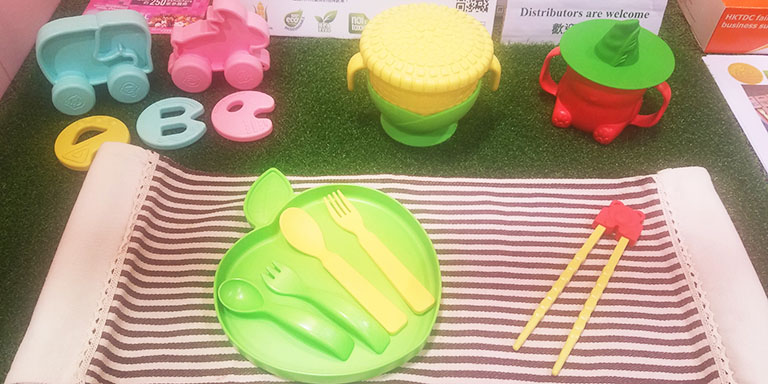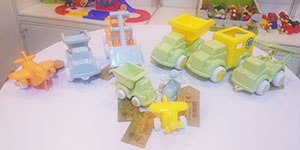
Science was in the driver’s seat as the HKTDC Hong Kong Toys & Games Fair launched the 2020 exhibition year for the Hong Kong Trade Development Council (HKTDC) early in January.The three trends on everyone’s minds at the fair were green, sustainable products; STEM (science, technology, engineering and maths) toys; and the digital transformation of the industry. These trends extended to two concurrent shows – the HKTDC Hong Kong Baby Products Fair and Hong Kong International Stationery Fair, the latter organised in association with Messe Frankfurt (HK) Ltd.
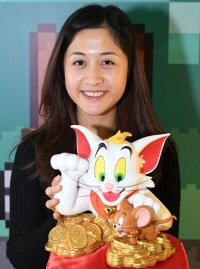
The green focus extended beyond recycling, with Hong Kong-based Baby Products Fair exhibitor Natural Made displaying its range of baby tableware made from corn starch (main picture). A Toys & Games Fair exhibitor from Sweden, Vikingtoys, displayed a range of toy vehicles made with Biothylene, derived from sugarcane grown in Brazil. The firm said its toy range is made without using fossil mineral resources, is durable so can be used by several generations of children, and the material itself is fully recyclable.Green issues were among the factors driving change in the industry, delegates at the Hong Kong Toys Industry Conference 2020, which ran in parallel with the fair, heard. The conference covered a plethora of the industry’s pressing issues, trends and aspirations – from the persistence of global trade tensions to the pros and cons of relocating production out of Mainland China, and from STEM to CE marking – under the theme “Get Powered Up – Opportunities in the Toys Industry”.The conference was co-organised by the HKTDC, the Federation of Hong Kong Industries, the Hong Kong Toys Council and the Toy Manufacturers’ Association of Hong Kong Limited.
European uncertainties
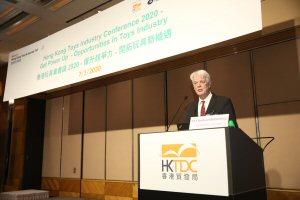
Toy enterprises seeking business in Europe needed to be aware of changes coming in the year ahead. Christian Wetterberg, Senior Director and Global Head, Product Safety & Compliance, at Toy Industries in Europe, noted that “tackling climate change has become a priority” after the European Parliament elections last year. Concerns are also growing over privacy issues amid the increasing popularity of toys with internet connections. He sees a potential review of the European Union’s Toy Safety Directive and other laws that may lead to bans on the use of non-sustainable materials in toys.Brexit is becoming a reality but details of the UK-EU economic relationship remain uncertain, Mr Wetterberg said, and the market will be braced for related risks this year. Many in the industry were sceptical as to whether a trade deal can be successfully negotiated within 11 months after the United Kingdom formally withdraws from the bloc, he said. For the regulation of toy industries, he said post-Brexit Britain may replace the CE safety mark with a UKCA mark, but specific safety rules may undergo more amendments in the long run.
Who’s not afraid of online toy stores?
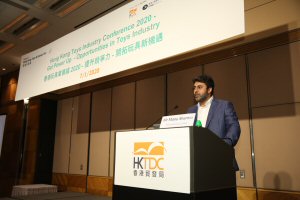
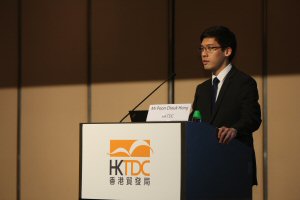
The closure of some leading toy store chains had compelled the industry to face an existential question: in the internet age, has traditional toy retailing been turned on its head? Manu Sharma, who directs the global product strategy of the 260-year-old UK-based toy store Hamleys, said the answer is no – if you make the most of the irreplaceable benefits a physical store offers.“We bring very strong experience in the stores, which is not provided anywhere else,” Mr Sharma, who is also Group Vice President, Business, Reliance Brands, told the conference. On the back of good pricing and a mix of e-commerce and bricks-and-mortar strategies, the face-to-face experiences such as character meet and greets, demonstrations, installations and parades are magnets for families. “As long as your doors are open for the kids to come and play, the customers will come back.”
The lessons from the world’s oldest toy shop-turned global franchise were echoed by HKTDC Economist Poon Cheuk-hong, who said a survey by HKTDC Research showed that online and offline channels are equally important when families in Mainland China choose and buy their toys. E-commerce has become an integral part of mainlanders’ lives but the late-2018 survey revealed that 72% of mainland parents bought toys on shopping websites, whereas as many as 71% did so in toy stores, followed by supermarkets and department stores. “Toy shops allow children to feel the toy and parents to test their quality,” Mr Poon said.
In e-commerce, do it the Chinese way
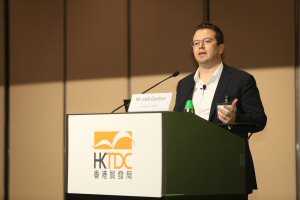
More and more retail brands realise the importance of an omni-channel strategy in the mainland but many do not know how to handle the online part, according to Josh Gardner, CEO of e-commerce consultant Kung Fu Data. He pointed out that the search-and-buy model, still a norm for e-commerce in the west, had fallen out of fashion in the mainland as platforms such as Tmall and JD have become embedded in the social media ecosystem. Foreign brands wanting to succeed in the mainland must build “a strong brand equity” by leveraging such integration tactics as co-branding, cross-platform selling and influencer marketing.
STEM shows promise
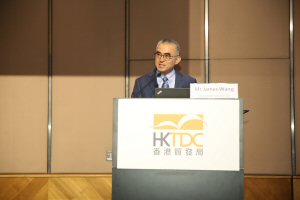
As mainland consumers become more willing to spend money on toys, Mr Poon stressed that the industry cannot afford to miss out on toys with STEM (science, technology, engineering and mathematics) concepts. An overwhelming 98% of mainland parents have bought or were interested in buying STEM toys for their children, he said, citing the survey, while the average price they are willing to pay for STEM toys was Rmb414 (US$60), well above the Rmb199 for general toys and presenting fatter profit margins for manufacturers. “It shows that Mainland Chinese parents are very concerned about their children’s education. If the toys can help with science grades, they are willing to pay more,” he said.James Wang, President of Dream International USA, said rising labour costs in the mainland had left toy manufacturers wondering whether they should relocate their production. Dream International, which has for long diversified into Vietnam for production, said the country does have a labour-cost advantage over the mainland but is not without problems. Challenges include lower-skilled workers, which dampens productivity, along with tighter labour supply and rising costs as Vietnam continues to develop. The company is exploring the possibility of building plants in other Asian countries such as Cambodia, Myanmar and India.
Related links
Baby Fair
Stationery Fair
Toy Fair
